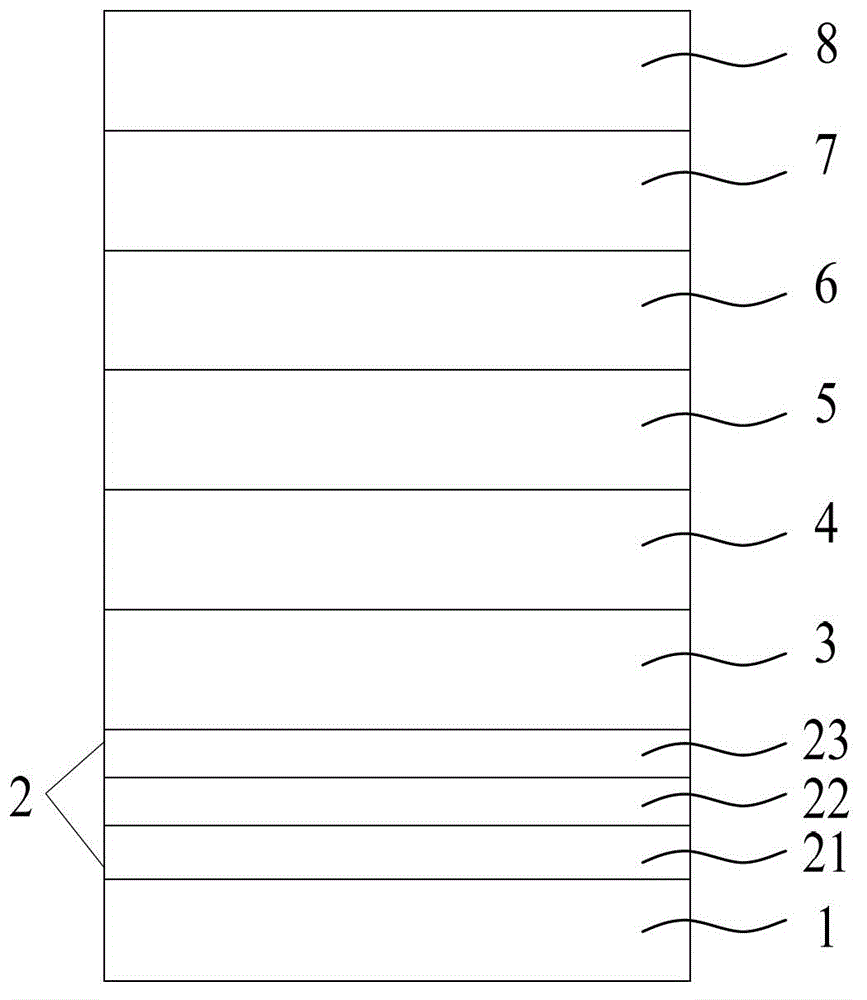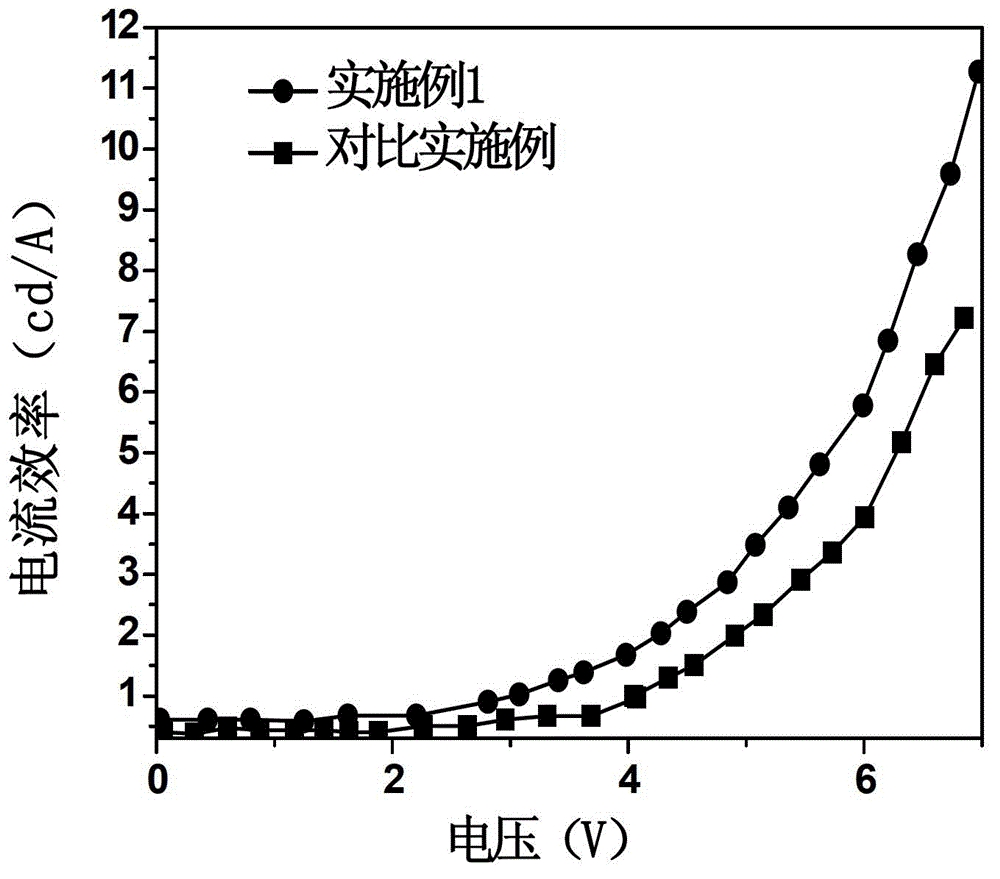Organic electroluminescent device and preparation method
An electroluminescent device and a luminescent technology, which are applied in the manufacture of organic semiconductor devices, electric solid devices, semiconductor/solid devices, etc., can solve the problems of total reflection loss, low light extraction performance, poor refractive index, etc., and achieve narrowing of the refractive index Poor, high light extraction efficiency, and the effect of improving hole injection efficiency
- Summary
- Abstract
- Description
- Claims
- Application Information
AI Technical Summary
Problems solved by technology
Method used
Image
Examples
Embodiment 1
[0046] A method for preparing an organic electroluminescent device, comprising the following steps:
[0047] (1) Choose N-LASF44 glass (refractive index: 1.8, light transmittance at 400nm: 96%) as the glass substrate 1, wash the glass substrate 1 with distilled water and ethanol in sequence, and place it in isopropyl Soak in alcohol overnight, rinse and air dry.
[0048] (2) Prepare the anode layer 2 on the light-emitting surface of the glass substrate. First, prepare the hafnium-containing compound layer 21 on the light-emitting surface of the glass substrate 1 by electron beam evaporation. The material of the hafnium-containing compound layer 21 is HfO 2 , the thickness is 60nm, and the energy density of electron beam evaporation is 30W / cm 2 , and then on the hafnium-containing compound layer 21, a conductive metal element layer 22 and a praseodymium oxide layer 23 are sequentially prepared by using a thermal resistance evaporation method. for PrO 2 , with a thickness of ...
Embodiment 2
[0059] A method for preparing an organic electroluminescent device, comprising the following steps:
[0060] (1) Choose N-LAF36 glass (refractive index 1.8, light transmittance at 400nm is 95%) as the glass substrate, rinse the glass substrate with distilled water and ethanol in sequence, and place it in isopropanol Soak overnight, rinse and air dry.
[0061] (2) Prepare the anode layer on the light-emitting surface of the glass substrate. First, prepare a hafnium-containing compound layer on the light-emitting surface of the glass substrate by electron beam evaporation. The material of the hafnium-containing compound layer is HfB 2 , the thickness is 20nm, and the energy density of electron beam evaporation is 10W / cm 2 , and then on the hafnium-containing compound layer, a conductive metal element layer and a praseodymium oxide layer are sequentially prepared by a thermal resistance evaporation method. The material of the conductive metal element layer is Al with a thickness...
Embodiment 3
[0072] A method for preparing an organic electroluminescent device, comprising the following steps:
[0073] (1) Select N-LASF31A glass (refractive index 1.9, light transmittance at 400nm is 92%) as the glass substrate, rinse the glass substrate with distilled water and ethanol in sequence, and place it in isopropanol Soak overnight, rinse and air dry.
[0074] (2) Prepare the anode layer on the light-emitting surface of the glass substrate. Firstly, the hafnium-containing compound layer is prepared on the light-emitting surface of the glass substrate by electron beam evaporation. The material of the hafnium-containing compound layer is HfO 2 , the thickness is 100nm, and the energy density of electron beam evaporation is 100W / cm 2 , and then on the hafnium-containing compound layer, a conductive metal element layer and a praseodymium oxide layer are sequentially prepared by a thermal resistance evaporation method. The material of the conductive metal element layer is Pt with a...
PUM
 Login to View More
Login to View More Abstract
Description
Claims
Application Information
 Login to View More
Login to View More - R&D
- Intellectual Property
- Life Sciences
- Materials
- Tech Scout
- Unparalleled Data Quality
- Higher Quality Content
- 60% Fewer Hallucinations
Browse by: Latest US Patents, China's latest patents, Technical Efficacy Thesaurus, Application Domain, Technology Topic, Popular Technical Reports.
© 2025 PatSnap. All rights reserved.Legal|Privacy policy|Modern Slavery Act Transparency Statement|Sitemap|About US| Contact US: help@patsnap.com


